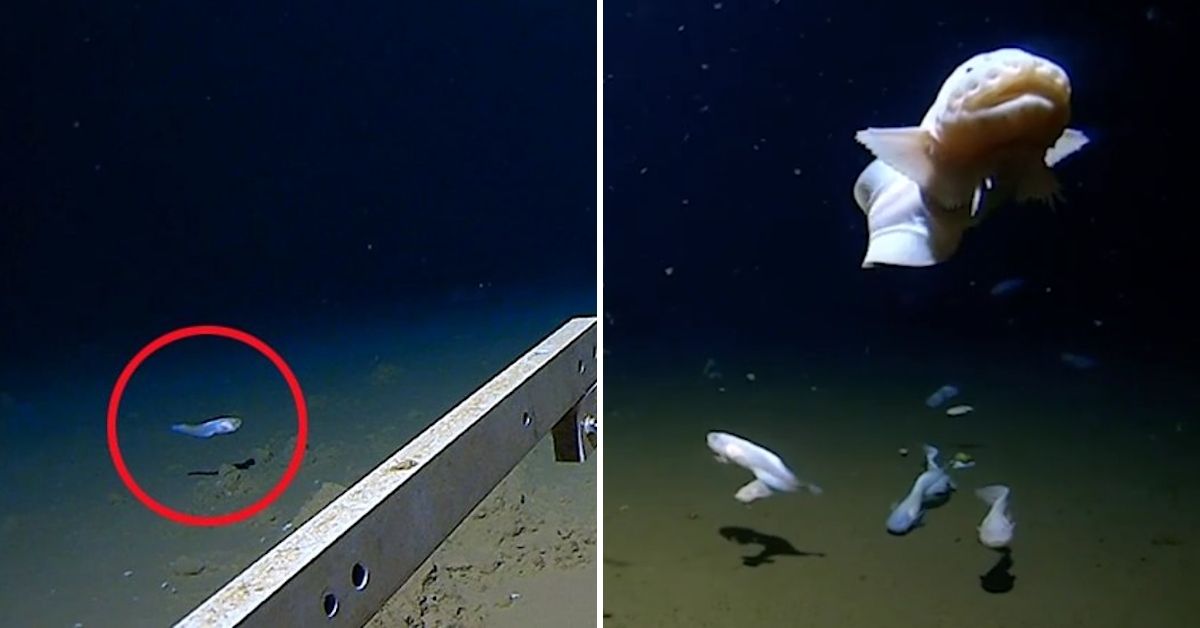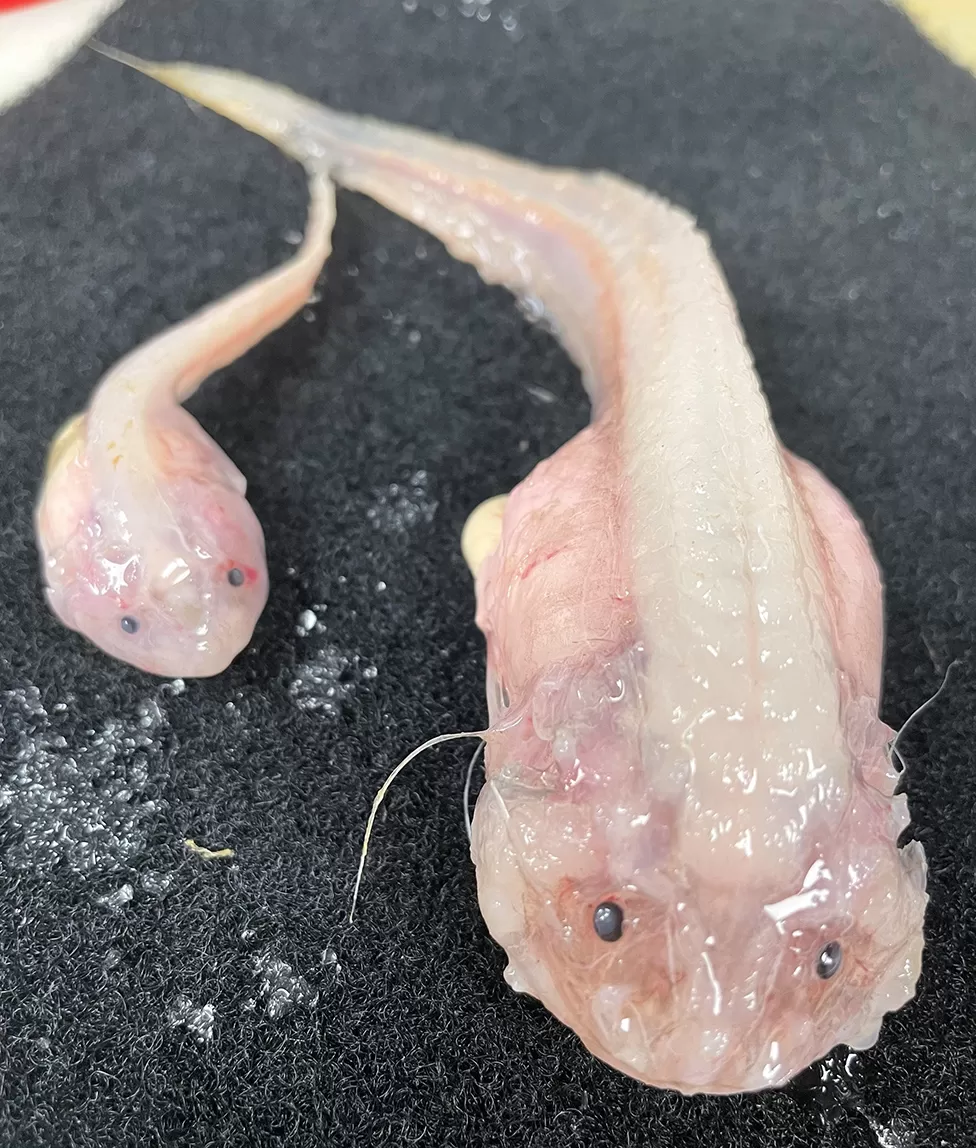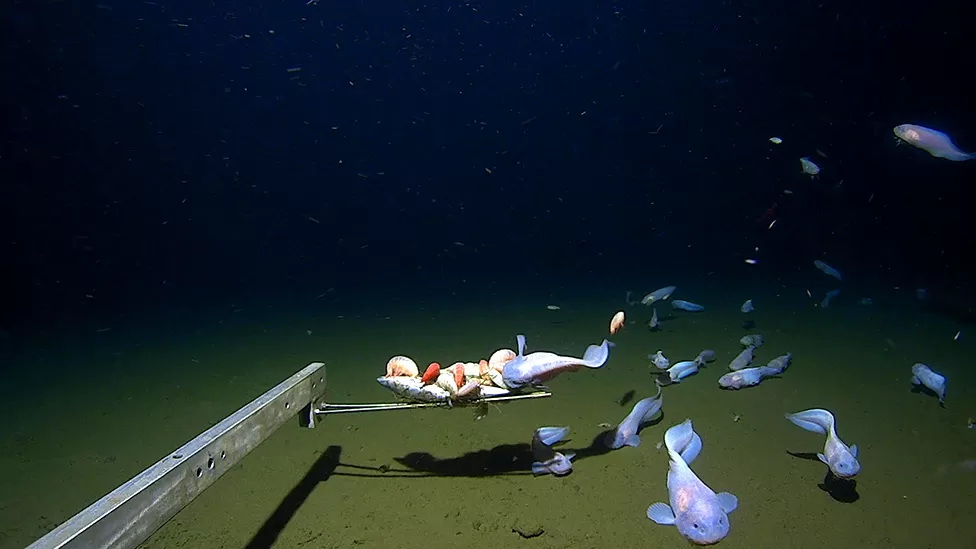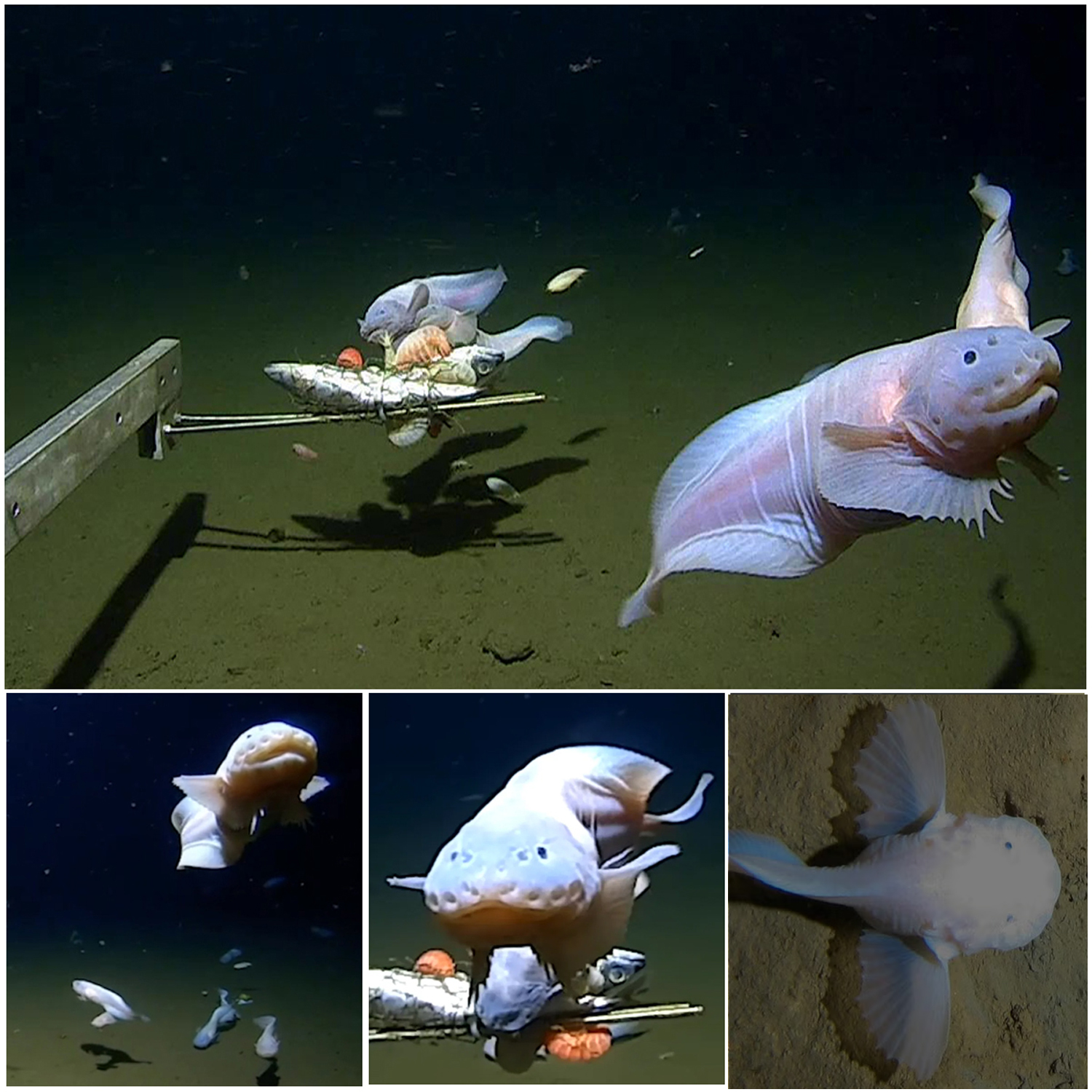10 years ago, a deep-sea scientist from the University of Western Australia predicted that fish would probably be discovered at depths ranging from 8,200m to 8,400m. Following a decade of research conducted worldwide, the prediction has proved to be correct.

Image credit: Minderoo-UWA Deep Sea Research Centre
An extraordinary discovery was made by scientists who captured footage of a fish swimming at an exceptional depth in the ocean. The species, identified as a Pseudoliparis snailfish, was observed at a depth of 8,336m (27,349ft) by an autonomous lander.
The discovery was made in the Izu-Ogasawara Trench south of Japan, one of a series of trenches that descend up to 11,000 meters (36,000 feet) below sea level at the western edge of the Pacific Ocean, where the Pacific plate, usually situated 4,200 meters (13,780 feet) under the ocean’s surface, submerges under different continental plates.
This marks the deepest-ever observation of this nature, and it likely won’t be surpassed either, as it was made at or very near the maximum depth that any fish can survive.
Prof Alan Jamieson, the scientist making the prediction a decade ago, told BBC News that if the current record were to be surpassed, it would likely be by a small margin, possibly just a few meters.
The previous deepest fish observation was made at 8,178m in the Mariana Trench, located farther south in the Pacific. The recent discovery in the Izu-Ogasawara Trench has surpassed this depth record by 158m.
The snailfish swimming at this extraordinary depth is seen in the video below during the first 15 seconds.
Video credit: Minderoo-UWA Deep Sea Research Centre
The young snailfish was filmed using a camera system attached to a weighted frame released from a ship, to which bait was added to lure in sea creatures. While the specimen’s species could not be confirmed since it wasn’t caught, a few other fish were trapped slightly higher up at a depth of 8,022m in the nearby Japan Trench.
These fish were identified as the snailfish Pseudoliparis belyaevi, setting a record for the deepest fish ever caught.

A few snailfish were retrieved from a depth of 8,022m – it is the deepest catch ever. Image credit: Minderoo-UWA Deep Sea Research Centre
Snailfish are an impressive group of creatures, with more than 300 species, most of which inhabit shallow-water environments such as river estuaries. However, some snailfish have also evolved to survive in the frigid waters of the Arctic and Antarctic, as well as under the extreme pressure conditions found in the deepest ocean trenches on Earth.
Their gelatinous bodies enable them to live at depths of 8km, where they endure over 80 megapascals of pressure, which is 800 times greater than that at the ocean surface. Also helping them is the fact that, in contrast to many other fish, snailfish lack a swim bladder, which is a gas-filled organ used for buoyancy control.
Moreover, snailfish are suction feeders that consume small crustaceans, a plentiful food source in the trenches.

Cameras on landers are deployed with bait to attract fish into their field of view. Image credit: Minderoo-UWA Deep Sea Research Centre
According to Professor Jamieson – who is the founder of the Minderoo-UWA Deep Sea Research Centre, which collaborated with a team from the Tokyo University of Marine Science and Technology during this mission – the discovery of a fish that inhabits depths greater than those found in the Mariana Trench is likely due to the slightly warmer waters in the Izu-Ogasawara trench. He further explained that the team anticipated discovering the deepest fish in this region and that it would be a type of snailfish.
Jamieson emphasizes that we possess a significant amount of knowledge about the deep sea and that our understanding of it is rapidly expanding.
“I get frustrated when people tell me we know nothing about the deep sea. We do. Things are changing really fast.”


